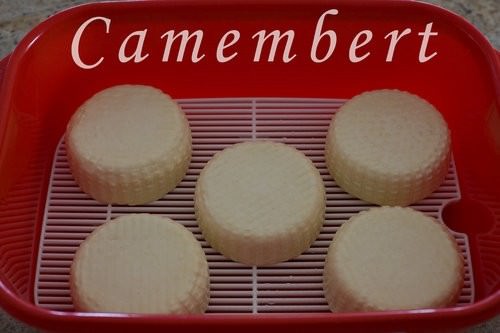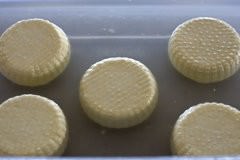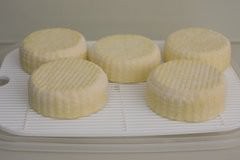Well after a complete failure I started my second attempt at making this illusive Homemade Camembert Cheese. I purchased the unhomogenised milk and warmed it to the appropriate temperature. I am pleased to see that it looks as it should, with the fat floating about on the surface.

Stage One
Once heated, the milk is poured into a container and the starter culture is added to the milk. The lid goes on the container and it goes into a foam box to maintain warmth while the milk’s cultures multiply. The cultured milk gets left for well over an hour, so I decide to get on with making dinner. The cheesemaking process will get more labour intensive at about the time when I should be feeding the family.
I am aware I am attempting the cheese very late in the day. I wasn’t able to start this process until 3.00pm and I have a long way to go yet. At this rate, I am expecting to go to bed at about 11.00pm tonight. I should then be setting an alarm to turn the cheese again at 4.00 am. I can’t see that happening somehow.
The reason I didn’t leave cheese making until the following day is the starter is only active for 48 hours and I would have to make a new starter if I didn’t continue to make the cheese today. Has this been painful… Yes! Would I do it again? Yes, but with the right ingredients, and at the start of the day.
I continue through the process and sure enough, it is a chore at the worst possible time, I am feeding children and turning curds all at the same time. Once I finally get the cheese into the hoops it is 6.30pm and I am well and truly over it all.
I then put a timer on to remind me to turn the pots every 15 minutes. The pots have little drainage holes which allow the whey to drain away, and the curds to settle down into the shape of the container.
This turning continues ½ hourly and then hourly. I made my brine solution for the next day and I go to bed exhausted after deciding not to do the final turn at 4.00am.
In the morning I am feeling better about the process, and I am excited to see my little Camembert. To my relief, when I remove them from the hoops they look like Camembert, despite the fact I skipped the 4.00am turn.
I added the white mould spore to the brine and placed the camembert in the brine solution. At this point, I was a little concerned that I might be using the incorrect spores so I gave The Cheesemaking Workshop a call and thankfully Lyndall was able to confirm that I was on track. The girls have all been so encouraging and helpful
The girls have all been so encouraging and helpful throughout my first and second attempt at the Camembert, I am so pleased that I have had their guidance. I set the timer to give the little cheeses a bath in the brine, I turned them and soak them some more.

The little Camembert were removed from the brine after their soaking. I placed them on a draining board in a container and left them for a few days to dry.
Stage 2
I checked on my little babies this morning and they seem to be doing fine. They are supposed to be left to air for 24 to 48 hours. I don’t feel that they have really dried sufficiently. Last night I took them out of their little container and just left them out on their drying rack.

This set up now reassembles exactly what was occurring at the workshop. I am a little worried that I should have done this from the start as I am not sure they were getting enough circulation of air inside the container. I hope they grow their tasty white mould the way they are supposed to. I may leave them out a little longer to dry. We were told we cannot progress to the next stage until they are properly dried.
Stage 3
My little Camemberts appear to be doing nicely. I have had them slightly chilling now for three days since they were dried. My babies are now seven days old, and they are growing the lovely distinctive white mould. It is probably slightly too early to call it a success, but I am now quietly confident that in three weeks time I will be sampling the first of many batches of homemade camembert.
More Pictures to follow, and an update when I sample the cheese!